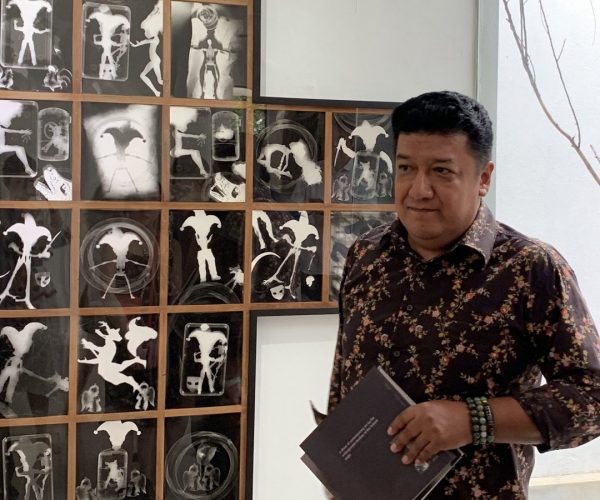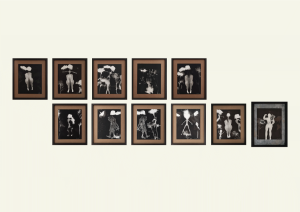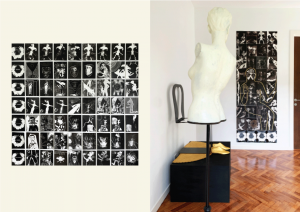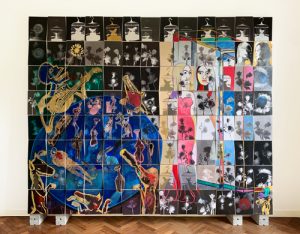
“Commercialism and industrialism now threaten, alas, to turn art into just another economic activity – and the artist’s ceremonial and magical role into a purely ornamental one. No doubt a certain superstitious awe still attends the artist’s endeavors; but in this consumerist age, the artist-shaman’s contribution to the success of the hunt has been reduced to churning out effective advertising and public relations for the vulgar new gods of materialism – or fashionable new trends for the children of the privileged.”
– Antares (Inner Technology of Art: Making Public the Private, 2001)

It’s not often that I get the chance to quote myself, so I decided to grab this opportunity. I feel the above statement is particularly relevant to what Ricardo Chavez Tovar is all about. He is one amongst a handful of artists with whom I’m personally acquainted who has consciously reclaimed his magical lineage as a brujo – a practising shaman. Technically, he is as conscientious and competent as any professional artist you will find anywhere in the world. It’s just that Ricardo doesn’t give two hoots about public relations and the glossy hype that permeates the art milieu.
I don’t claim to know the man at all, but he apparently knows something about me, since he keeps inviting me to officiate at his openings. And now he is twisting my arm to write a foreword for his catalog, even though he must suspect I no longer feel fired up enough about art to wish to pontificate about it. In any case, Ricardo says I should view it as an honor and not a chore, and so I will.
Ricardo Chavez Tovar will always be an enigma – perhaps even to himself. I won’t attempt to expound upon his equally enigmatic and intriguing art. Indeed, to approach his work on the cerebral level seems sacrilegious. It would be as uncouth and ungracious as furtively extracting dead skin cells from the fingers of the Muse for laboratory analysis, instead of ecstatically surrendering to her tender caresses.
One thing is certain: Ricardo Chavez Tovar is not bothered by the games people tend to play and the elaborate pretenses that surround the rarefied precincts of fashionable and marketable art. Would he otherwise spend months and years working on exhibits that can’t be sold and proudly displayed in the finest suburban homes?
Nonetheless, having said that, I can picture Ricardo’s evocative installations occupying pride of place in some prestigious contemporary art museum anywhere in the civilized world – so I hope he maintains an open mind about the prospect of sudden, unexpected global acclaim.

What drives the man, then, to such unimaginable intensities of feeling and artistic arousal? If the word “religious” didn’t carry such a heavy burden of negative connotations, I would apply it to Ricardo’s art. After all, he was born Mexican: a tempestuous genetic and cultural mix of Olmec, Maya, Zapotec, Toltec, Aztec and Conquistador. His blood is infused with the otherworldly song of stars; and with the colors, flavors and textures that inspire vivid murals. His cellular memories encompass galaxies and constellations. The mystery of death fascinates and obsesses him as powerfully as the secret of life. His imagination is fired equally by the divine and the diabolical. You could call him a regenerate pagan, a renegade human.
Ricardo’s series of installations dedicated to the Muse – conspicuously absent, yet ubiquitously present – now exist only in photographic form lovingly documented by Ung Chirt Min – having been exhibited to no more than a tiny number of hardcore aficionados. In effect, Ricardo Chavez Tovar is one of those rare artists who can operate quite happily without an audience, since his art is his personal form of worship, his own sacred ceremony.

What inspired him to embark on the current series? In a recent email Ricardo discloses that he “got struck by a shining light of creative madness” while listening to The Residents, one of his favorite avant-garde bands, whose allusions to an imaginary guru named N. Senada and his Theory of Obscurity were probably based on the mutant musings of Don Van Vliet aka Captain Beefheart – a 1970’s Dada rock icon who retired from the music scene in 1982 to focus on painting.
Ricardo spent three years in China learning the language and absorbing the culture. Then he relocated to Penang where he has taught for more than ten years. His best buddy and artistic accomplice in Penang is Askandar Unglehrt (a German married to a Kelantanese princess) who shares Ricardo’s eye and taste for the surreal, the epiphanic and the ephemeral – and also the luminous, numinous, humorous, ludicrous and (conceptually) intoxicating.
I mention Askandar because his contribution to Ricardo’s evolution as an artist-magician cannot be discounted. Every artist, shaman, sorcerer or wizard derives inspiration, nourishment and nurturing from those who recognize, acknowledge and believe in him.
Well, Ricardo, let me state here for the record that I, too, recognize, acknowledge and believe in you. Live long, prosper (if at all possible), and influence the course of human destiny (if you so desire).
This article was written by Antares on 6 Aug 2009 and initially published on his blog Magick River. Click here to read more.
antares maitreya
Writer, Art Critic
In Radar
